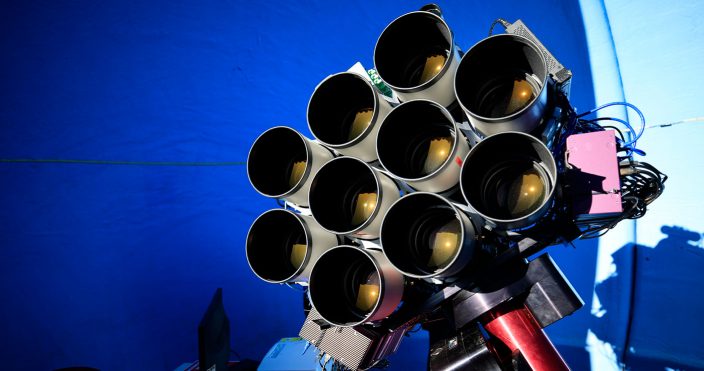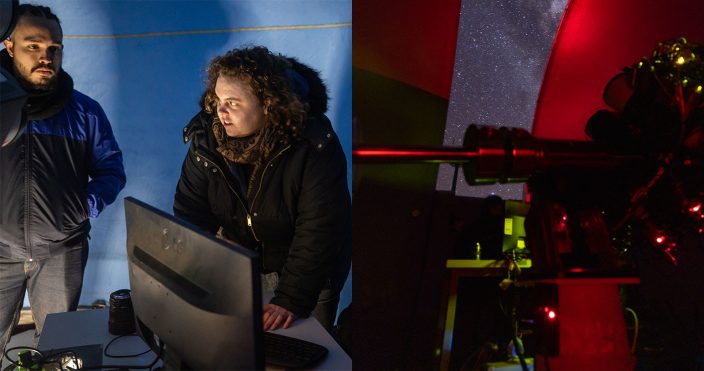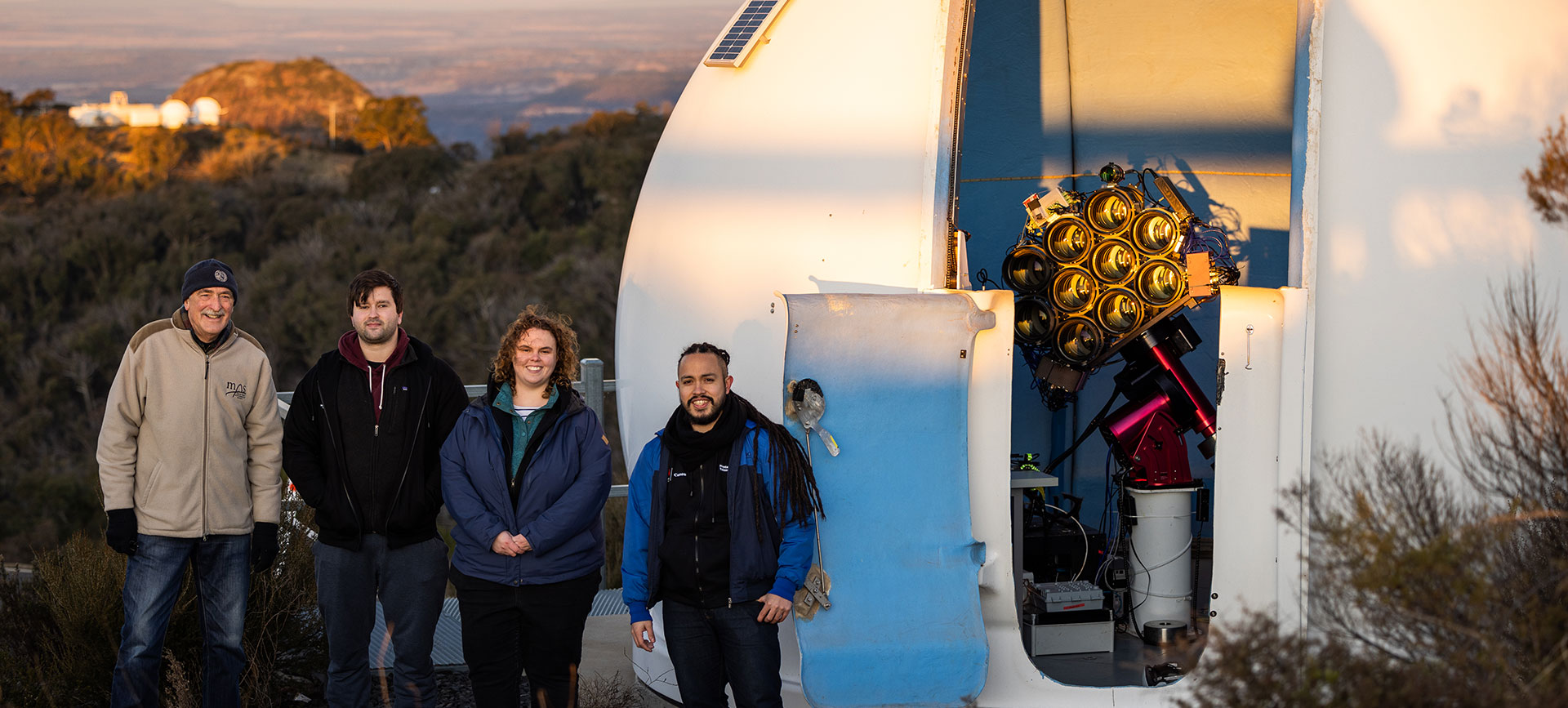Located at the Siding Spring Observatory near Coonabarabran, is a Huntsman that can see the future. No, it’s not a clairvoyant spider, but rather Macquarie’s new Huntsman Telescope.
Last week, supported by Canon Australia, Macquarie officially unveiled The Huntsman Telescope – a novel telescope concept designed to find and study ultra-faint galaxies and astronomical objects in the Southern Sky.
The Huntsman will perform deep southern sky surveys to provide researchers with a unique understanding about galaxy formation and evolution; how galaxies form, how they grow, how they engage with structures that surround them, and what happens when galaxies collide.
“The Huntsman Telescope’s work will be crucial to understanding what might happen should our Milky Way Galaxy have a head-on collision with its neighbour, the Andromeda Galaxy – an event theorised to occur in 4.5 billion years,” says Principal Investigator Dr Lee Spitler, from the School of Mathematical & Physical Sciences and Australian Astronomical Optics-Macquarie.
“The Huntsman Telescope is pioneering the way in which we view our Southern skies by capturing images of the faintest galaxy structures that conventional telescopes simply couldn’t.
“The ability to observe the remnants of galaxies colliding with each other and searching for the faintest and smallest galaxies in the universe, will help us understand the potential fate of the Milky Way in the far distant future.”

Pictured: The Huntsman Telescope
The Huntsman Telescope is currently the only telescope of its kind in the Southern Hemisphere and was inspired by the innovative Dragonfly Telephoto Array, based in the United States. The Huntsman Telescope comprises 10 “off-the-shelf” Canon EF 400mm f/2.8 L IS II super-telephoto lenses which are usually used by professional sports or wildlife photographers.
Of the nine members of the Huntsman Telescope’s technical and science team, five are Macquarie PhD students, who are benefiting from the unique opportunity to have hands-on training with such high-tech equipment.
Sarah Caddy, a PhD Candidate from the School of Mathematical and Physical Sciences, explained the approach of combining individual lenses will enable the Huntsman telescope to scale with the needs of scientists in the future. Recent upgrades to the telescope are already set to further enhance Huntsman’s abilities in studying the Universe.
“The Huntsman’s new suite of powerful computers enable each lens or ‘eye’ of the Huntsman to operate independently of each other. This will allow the telescope to autonomously detect ultra-fast transient events like stellar flares from distant stars, or even more exotic phenomenon like aiding the search for origin of fast radio bursts that continue to elude astronomers,” says Sarah.

Pictured (L to R): PhD Candidates Jaime Alvarado-Montes and Sarah Caddy
The Huntsman Telescope project is a jointly-led project from the School of Mathematical and Physical Sciences and Australian Astronomical Optics-Macquarie. The project is supported financially by a Discovery Project awarded through the Australian Research Council.
The Huntsman Telescope will be open to the public on 1 October 2022, as part of the annual StarFest.
Featured Image – Pictured (L to R): Professor Fred Watson AM with PhD Candidates Fergus Longbottom, Sarah Caddy and Jaime Alvarado-Montes.


 Back to homepage
Back to homepage
A visit to Siding Spring Observatory is highly recommended. I took my family there in 2020 and it was fantastic!